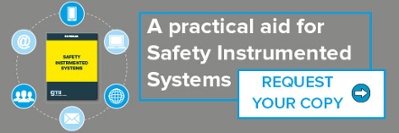Smart devices represent a great opportunity to modernize your systems. The smart diagnostics that all our systems have can report faults and provide vital information in real time. For an industrial setting, by smart device we mean a device that makes use of new micro-electronics to act as a digital system that is able to execute a great many operations and provide information related to various measurements.
Examples include microelectromechanical systems (MEMS), the Internet of Things (IoT), and wireless sensors and actuators distributed in a wireless sensor network (WSN) that facilitates the connection of peripheral devices in areas of limited size and with lower levels of traffic and extremely reduced consumption levels.
Process equipment is seeing an increasing integration of smart valves, sensors and other devices installed as a part of their protection systems.
The technologies that we can generically call “smart” enhance the performance of protection systems when used in combination with other specific devices (e.g. barriers, isolators, I/O systems, controllers, amplifiers, signal converters), industry standards (ANSI/ISA 84.00.01, IEC 61508, IEC 61511), and applicable methodologies (e.g. layers of protection analysis, or “LOPA”).
Another interesting aspect of smart devices is their ability to provide a great deal of data that can be processed later by monitoring software. This type of software transforms this raw data coming from smart devices into information that can be used.
The issue of maintenance
Traditional field devices that make up a Safety Instrumented System (SIS) are often obsolete. For example, it often happens that they aren’t able to provide information to systems of automation, supervision, maintenance, or enterprise management. This means that, in order to control a device, you need to send a worker out into the field, where they often simply need to check a simple on/off or 4-20 milliamp signal.
Fortunately, certain sensors, positioners, actuators and measurement devices installed in the last 10-15 years incorporate a minimal level of diagnostic capability. In other cases, field devices can be retrofitted with smart features or replaced. In certain cases, a SIS that is able to gather more diagnostic data from each field device can significantly improve the quality of the data they provide, and this can ultimately make the lives of maintenance staff and those running the equipment quite a bit easier.
Within this landscape, the introduction of smart devices needs to involve a careful process of change management. You need to take account of any malfunctions or other process issues that could arise. Generally, this is done by way of testing and monitoring the SIS and related field devices (e.g. sensors, analysis and measurement devices, valves, logic controllers, etc.).
Smart device diagnostics make great leaps in quality possible on multiple fronts. It can point to a device functioning improperly or a communication failure, can predict an impending failure, and can facilitate the task of designing redundant systems.
The importance of software and skills
Without a plan that is supported by adequate analysis tools, the flow of data from smart devices can quickly overwhelm users and operators to the point that they start to ignore useful information. Fortunately, there are software tools that can monitor safety and point to risks in real time, monitor changes in risk levels over time, and provide emergency-response plans in the event of safety incidents.
But like any other technology, this software is only useful when its users possess the skills needed to understand process risks, SIS automation, and safety requirements.
The challenge for maintenance managers is that of finding a balance between the implementation of automated systems that truly protect the plant, people, and the environment and the adoption of particularly advanced platforms.
The optimal solution is to make use of smart design, use specific safety-monitoring software and, above all, adequately train personnel.


